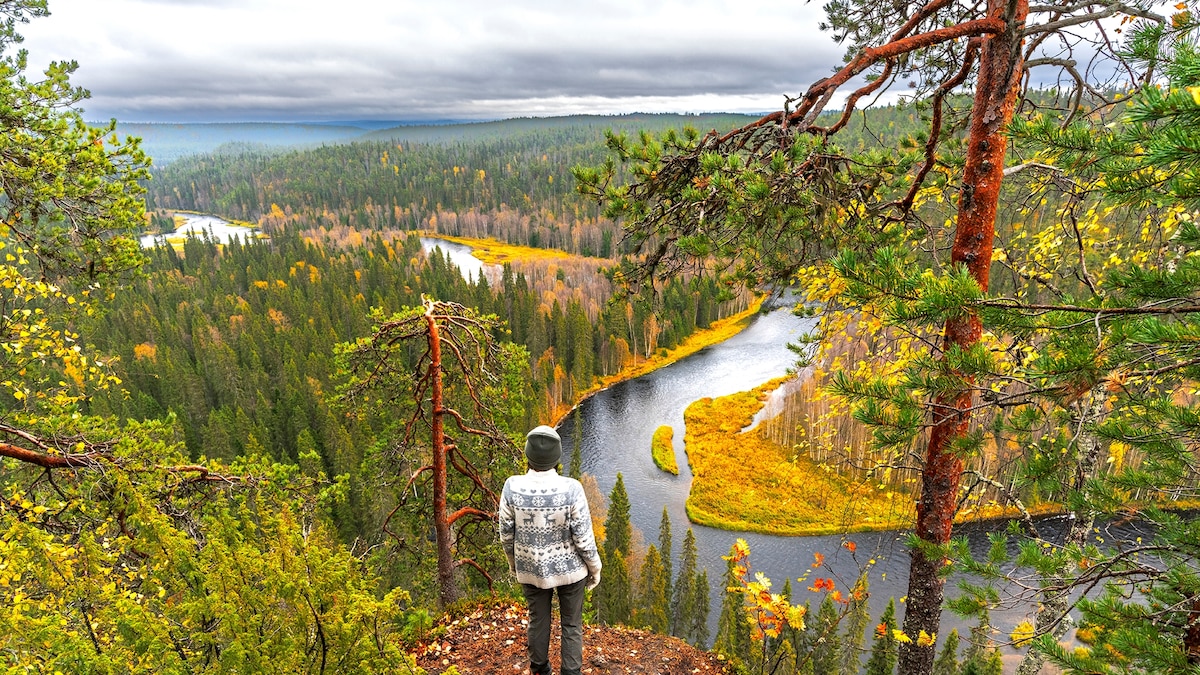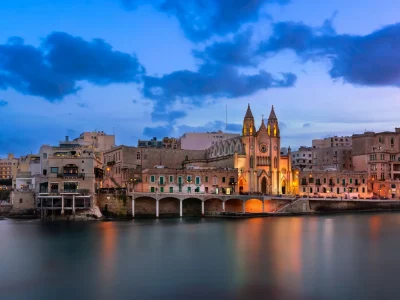This article was produced by National Geographic Traveller (UK).
There’s no denying wild camping takes a lot of work. The buy-in costs are steep, too, if you can’t borrow (or rent) your gear — tent, camping stove, water filter, sleeping bag, rucksack, waterproofs. But if you love the great outdoors, you’ll think it worth every penny when you pitch your tent and watch the sun set in the middle of nowhere. Your boots are off, dinner’s a-cooking and a sense of peace and serenity wraps itself around you like a blanket. There’s bound to be a sense of pride, too — and it’s never stronger than when, the following morning, you pack away your gear and clear up every last speck of rubbish. In a day’s time, once the grass has recovered, no one will know you’ve even been there.
Sounds tempting? Then here are seven of Europe’s best destinations where, provided you respect the rules, you can enjoy the thrill of wild camping.
1. Stockholm Archipelago, Sweden
With more than 30,000 islands and skerries to choose from, you’re always close to somewhere where you can pitch a tent here — in sheltered bays, hidden away among trees or perched on one of the ubiquitous, waterside domes of rock. And with the Baltic Sea breezes blowing, mosquitos are almost never a problem.
For first-time explorers and those without their own gear, the area between Sollenkroka and Stavsnäs is the perfect playground. Both harbours are served by buses from Stockholm and are home to rental companies such as Nature Travels and Get Out, who can provide not just kayaks but complete sets of camping gear. All you need bring is your own food and a sense of adventure.
Be mindful that wild camping is not permitted on every island in the Stockholm Archipelago. Some are too densely settled for that and the rule of thumb in Sweden is that you shouldn’t pitch your tent on working farmland or anywhere near a house.
2. Nærøyfjord, Norway
You won’t find a more spectacular place to camp than this — on the shores of Norway’s narrowest fjord, with towering cliffs almost everywhere you look. Norway’s right to roam and its permissive camping rules suggest a landscape full of promise, too, though the sheer-sided topography does limit the number of good pitches. It’s best to invest in a detailed map and plan ahead. Take the train from Bergen to Voss, then a bus to Gudvangen and after that you have two choices. Either rent a canoe from Nordic Ventures and paddle your way to a pitch. Or take a ferry to Dyrdal and explore on foot from there. You might want to book into a proper campsite on your first night — such as Dyrdal Gard. That way you can take your time finding a wild pitch on day two.

Scotland’s Isle of Rum offers ultimate solitude to wild campers. Photograph by Joerg Angeli, Getty Images
3. Rum, Scotland
Half the fun of wild camping comes from the giddy sense of being off-grid, and in the UK there aren’t many spots more disconnected than the Isle of Rum. It’s a sizeable island in the Inner Hebrides which comes complete with its own challenging circuit of mountains to rival the Cuillins of Skye. It’s also car-free and 85 minutes by the quickest ferry from Mallaig.
Few people pop over for a day trip. Instead, alongside a local population of 40 people, you’ll find 1,000 red deer, around 30% of the world’s population of Manx shearwater and two kinds of eagles. Scotland’s generous wild camping rules apply though you can only stay in one spot for two or three days before moving on. Sheltered Kinloch Bay may look tempting but is home to a large and hungry host of midges. So hike instead to the more exposed Kilmory Bay on the north coast — the view is straight across the water to Skye.
(How to plan a wild camping adventure in Scotland.)
4. Oulanka National Park, Finland
The thunderous cataracts and broad, ever-changing sandbanks of two rivers — the Oulankajoki and Kitkajoki — add an ever-present sense of drama to Finland’s Oulanka National Park. Straddling the Arctic Circle in eastern Finland, it’s a place of primeval forest, rare orchids and intact ecosystems that include bears, lynx and wolverines. But it’s also home to one of the country’s most popular hikes: the 50-mile Karhunkierros. Aim for late August or September (when the mosquitoes have gone), fly into Kuusamo airport and travel onwards by bus to the central Oulanka Visitor Centre, changing at Käylä. You’ll find Finland’s right to roam (and to camp) is tempered by local regulations. But pitching your tent close to official rest areas and wilderness cabins seems a small price to pay for access to such a big, green and biodiverse space.

Latvia’s vast network of state forests and rural beaches are the only sites where wild camping is allowed. Photograph by Victoria Vitkovska, Getty Images
5. Cape Kolka, Latvia
Latvia’s wild camping rules are some of the tightest in the Nordics and Baltics — it’s not allowed in national parks and nature reserves, and you can be moved on if you camp on private land, too. However, you can go wild camping in the country’s vast network of state forests as well as on its rural beaches (provided you avoid sand dunes). So it’s no wonder the forested shores that lead towards Cape Kolka are so popular with Latvians in the summer. Lying 75 miles northwest of the capital — on the Baltic Coastal Hiking Route — this long, sandy spit of land is where the Gulf of Riga meets the Baltic Sea. Depending on which shore you pitch your tent, it’s a place of magnificent sunrises and sunsets, too.
6. Lake District, England
Wild camping is not permitted in the Lake District without the relevant landowner’s permission. But there is, nevertheless, a long tradition of pitching your tent quietly for a night amid the high fells. If do choose to try it, then both the National Trust (which owns or manages about 20% of the park) and the Lake District National Park Authority publish good-practice guidelines, which are very sensible, given the fragility of this exposed, weather-beaten landscape, and the risks of provoking a reaction from the authorities. Essentially, you need to wait till dusk before pitching your tent — for one night only — and it must be above the highest fell wall, away from streams, tarns and lakes, and out of sight of both houses and other campers. Avoid all fire-making and carry out everything with you afterwards. Yes, that sounds stringent, but you may find it worth every hassle to inhabit, albeit briefly, such a raw and empty place.
(6 of the best places for wild sleeping in England and Wales.)

In the Romanian Făgăraș Mountains nights are spent lake-side. Photograph by Alexandr Spatari, Getty Images
7. Făgăraș Mountains, Romania
Wild camping isn’t allowed on protected land in Romania, be it a national park, nature reserve or national monument. Campfires are not generally permitted either, unless it’s in a designated fire pit. But that still leaves plenty of tempting possibilities — notably the five-day traverse of the Făgăraș Mountains in the southern Carpathians. Rising to 8,346ft, it’s a rugged but magnificent route and, despite the knife-edge terrain, there are plenty of places where you can descend a few hundred feet off the ridgeline to camp beside lakes and streams. Access is via Valea Fratelui railway station at the western end and Zărnești station in the east and you should always walk with at least one friend. Up on the ridge, you’re well above the treeline, which reduces the risk of bear encounters, too, but the sheepdogs can be pretty fierce in these parts, so stay vigilant and respectful.










